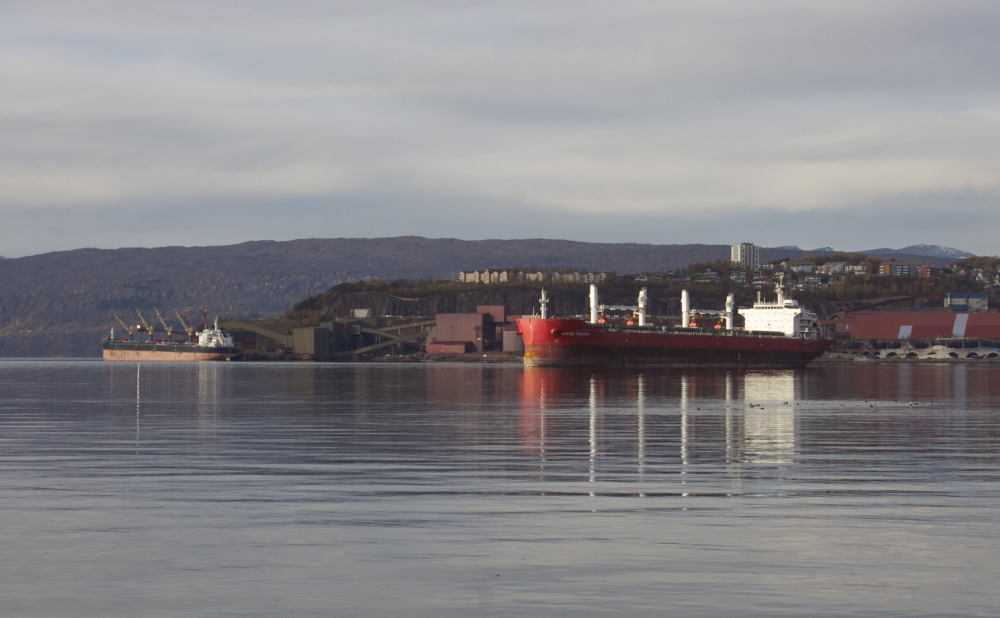The U.S. State Department has chosen Portland to host an international forum on the Arctic next year, the first such forum in the United States outside of Alaska.
The meeting will put Maine in the international spotlight, said Dana Eidsness, director of the Maine North Atlantic Development Office.
“This is a true turning point for Maine as we step further on the Arctic stage and join Alaska at the forefront of U.S. engagement in the Arctic,” Eidness said.
About 250 delegates are expected to attend, including scientists, business leaders and senior government officials from eight Arctic nations. U.S. Secretary of State John Kerry and the heads of state of Arctic nations may also attend.
The Arctic Council’s Senior Arctic Officials meeting will be held in Portland from Oct. 4-6, 2016. That September, an Arctic Council subcommittee that works on protecting the marine environment will also meet. The date of that meeting, which will bring about 75 delegates, has yet to be scheduled.
The Arctic Council is a high-level intergovernmental forum that addresses environmental and economic issues faced by the indigenous people of the Arctic and governments with Arctic territories. It has eight member countries: Canada, Denmark, Finland, Iceland, Norway, Russia, Sweden and the United States. Each nation takes a turn at chairing the council, which means hosting the meetings and setting the agenda.
Maine is some 1,500 miles south of the Arctic Circle, but officials and businesses leaders here are trying to position the state as a gateway to the “high north” because of its geographic location at the northeast corner of the nation and its business ties with the Icelandic shipping line Eimskip.
Eimskip, which two years ago moved its North American headquarters from Virginia to Portland, connects Maine with ports throughout the North Atlantic, including Newfoundland, Nova Scotia, Iceland, Greenland, Norway and Russia.
Three officials from the U.S. State Department visited Portland early last month to scout Portland as a possible host city for the Arctic Council meeting. They met with scientists, Maine officials and business leaders, including Larus Isfeld, Eimskip USA’s managing director.
Isfeld said the Arctic Council meeting will allow Maine companies that want to pursue business with other Arctic nations to showcase their abilities.
“There’s going to be high-profile individuals coming from all over the world who will get to experience what Maine has to offer,” he said. “And I challenge Maine businesses to capitalize on that.”
Gov. Paul LePage in a statement said the investment made by Eimskip has made Maine’s Arctic connection possible.
“If Maine is going to see increased trade and shipping activity as a result of what’s happening in the Arctic, then it’s our responsibility to actively participate in these important discussions,” LePage said.
The meeting also presents an opportunity for scientists to share their expertise, said Gordon Hamilton, a professor at the Climate Change Institute and School of Earth and Climate Sciences at the University of Maine.
In addition, the meeting raises the profile of Arctic issues within the state and New England, he said. That’s important given the impact of climate change on Gulf of Maine ecosystems and sea levels, he said. In addition, he said, Maine is closer to the Arctic than any other state on the Atlantic coast, so there will be trade opportunities for Maine businesses as melting Arctic seas open up new shipping lanes between the United States and Asia.
“It’s a big deal for Maine,” he said of the Arctic Council meeting.
Maine’s involvement with commerce in the Arctic dates back to when Maine fishermen in the 1800s traveled there to hunt whales and seals. Starting in the early 1860s, Bowdoin College faculty and students began traveling to the Arctic, particularly to Labrador and Greenland. Maine shipbuilders also built two pioneering vessels designed for Arctic exploration. The first, the SS Roosevelt, was a wooden ice breaker built in Bucksport in 1905. The ship, which took Admiral Robert Peary on his trek to the North Pole in 1909, was double planked with oak and carried cement in its belly to give it power to break ice.
In 1920, boat-builders in East Boothbay built the Bowdoin, the only American schooner constructed specifically for Arctic exploration. The boat made 29 expeditions to the Arctic.
Send questions/comments to the editors.



Comments are no longer available on this story